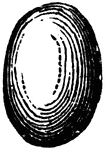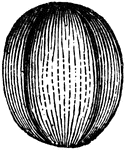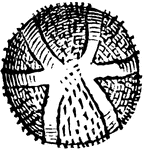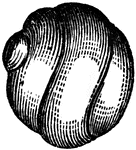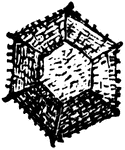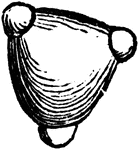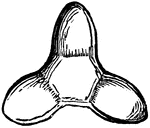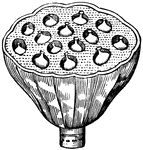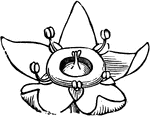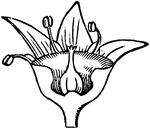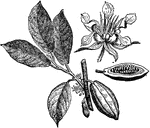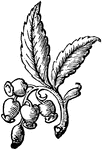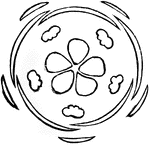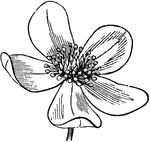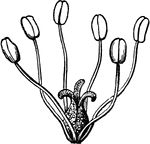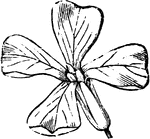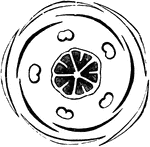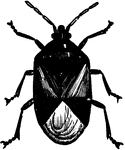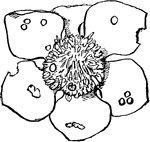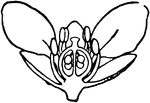
Hibiscus pollen
Magnified pollen of Hibiscus and other Mallow plants, beset with prickly projections.

Polllinia of a Milkweed
Pollen, a pair of pollinia of a Milkweed, Asclepias, attached by stalks to a gland.
Polllinia of a Orchis
Pollinium of an Orchis (Habenaria), with its stalks attached to a sticky gland.

Pistil of Saxifrage
Two simple carpals or pistil-leaves, united at the base only, cut across both above and below.

Pistil of common St. John's-wort
Compound 3-carpellary pistil of common St. John's-wort, cut across: the three styles separate.
Pistil of shrubby St. John's-wort
The same of shrubby St. John's-wort; the three styles as well as ovaries here united into one.
Pistil of Spiderwort
Compound 3-carpellary pistil of Tradescantia or Spiderwort; the three stigmas as well as styles and…
Pistil of Sandwort
Pistil of a Sandwort, with vertical and transverse section of the ovary: free central placenta.

Ovary of Frost Weed
Cross section of the ovary of Frost-Weed (Helianthemum), with three parietal placenta, bearing ovules.
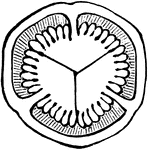
Hypericum graveolens
Cross-section of an ovary of Hypericum graveolens, the three large placenta meeting in the centre, so…

Ovule of a Magnolia
Three early stages in the growth of ovule of a Magnolia, showing the forming outer and inner coats,…

Silene Pennsylvanica
Longitudinal section of flower of Silene Pennsylvanica, showing stipe between calyx and corolla.
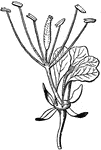
Flower of a Cleome
Flower of a Cleome of the section Gynandropsis, showing broadened receptacles to bear petals, lengthened…

Mulberry Grains
One of the grains younger, seen to be a pistillate flower with calyx becoming fleshy.

Opposite-Leaved
Diagram of opposite-leaved plant with a cyne of three flowers; a the first flower, of the main…
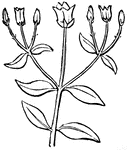
Opposite-Leaved
Diagram of opposite-leaved plant with a cyne of three flowers; a the first flower, of the main…

Trillium
Diagram of flower of Trillium. In this, as in all such diagrams of cross-section of blossoms, the parts…

Coreopsis
A slice of the head of flowers of a Coreopsis, with one tubular perfect flower (a) left standing on…
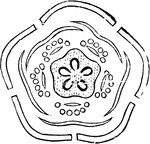
Linden
Diagram of a flower of Linden, showing the calyx valvate and corolla imbricate in the bud, etc.

Primrose succisa
"Scabious succisa, the primrose scabious, is a common European plant, which bears purplish-blue…

Prunella
"The prunella, or self-heal, is a genus of hardy perennial, herbaceous plants belonging to the order…
